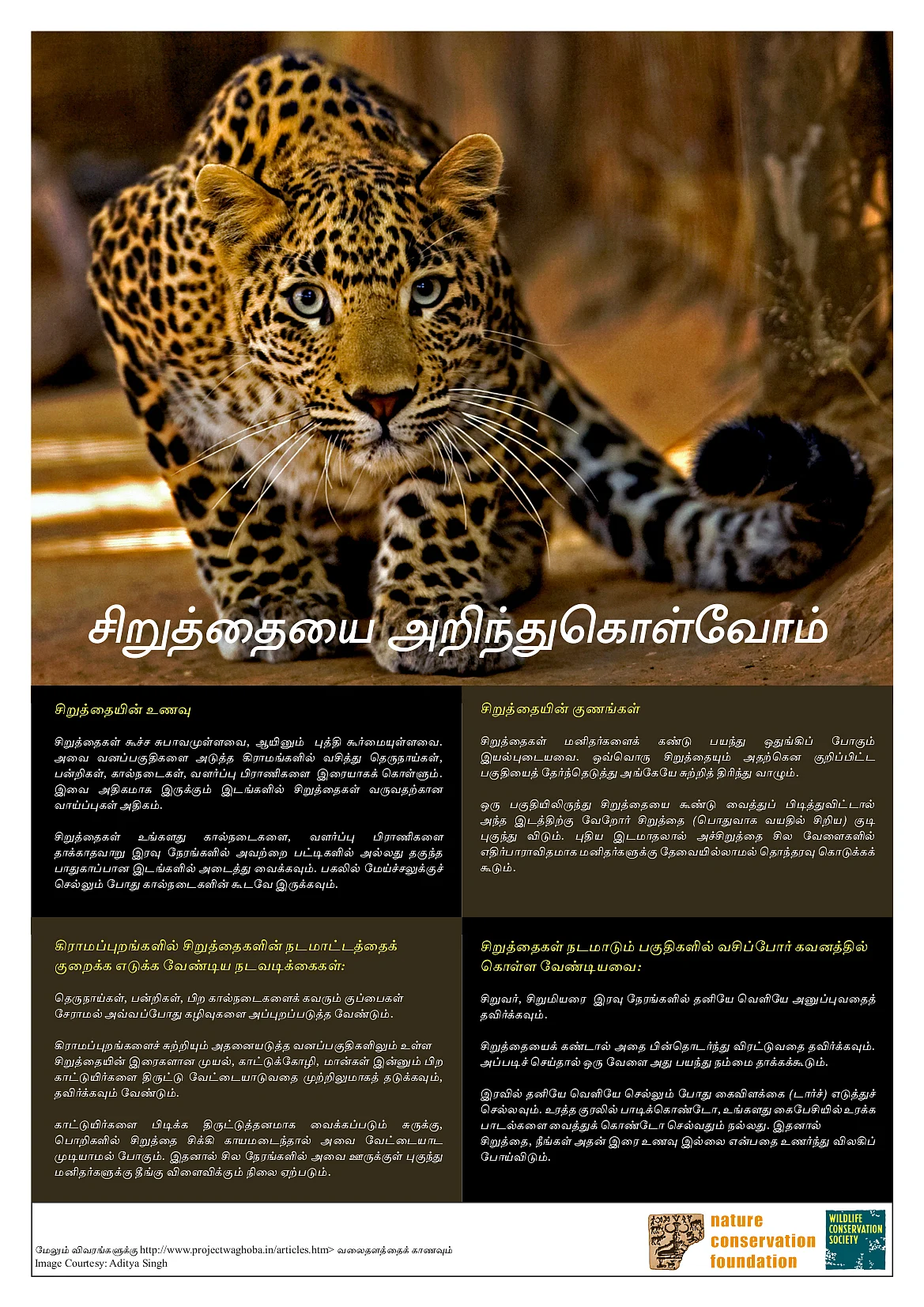Carnivore, conflicts, and conservation in the Anamalai hills
When people and large carnivores like leopards share a landscape, can we foster their coexistence? To do so we need to understand conflict incidence in relation to the needs of people and leopards. Measures can then be chosen to avoid negative interactions, while building awareness on how to live alongside leopards.
The adaptable cat
Unlike other big cats in India, the leopard adapts well to landscape changes. The ability of the cats to occur in a wide range of habitats both within and outside wildlife protected areas bodes well for their persistence, but it comes with a price. Although leopards tend to shy away from people, they may enter human settlements or occasionally attack people or livestock causing injuries and deaths, leading to retaliatory measures.
To avoid negative interactions between people and leopards in human-use landscapes requires a good understanding of the ecology and behaviour of leopards. We studied leopards in a landscape of tea and coffee plantations with embedded rainforest fragments in the Anamalai hills. In the fragmented landscape and in the surrounding Anamalai Tiger Reserve, we set out to document leopard occurrence, the distribution and relative abundance of various prey species, and the occurrence of incidents of conflicts with people.
Landscapes with leopards
Our study showed that leopards in the landscape subsisted on four main wild prey species: Indian muntjac, Indian spotted chevrotain, sambar, and Indian porcupine. These animals contributed 95.1% of prey biomass consumed by leopards, with the rest being minor wild prey species. Although livestock are occasionally killed, we found no livestock remains in identified scats, and the leopards are not dependent on domestic animals to meet their dietary needs.
The landscape also supported a good wild prey base. The prey species persisted in plantations and forests but varied in relative abundance by land-use type, with forest fragments supporting higher abundances of many species. As leopards were not dependent on domestic livestock and appeared to have both suitable habitats and prey species. If the forest fragments are protected, the landscape has a high potential for leopard conservation and coexistence with people. To enable coexistence, it is also essential to minimise or avoid negative interactions and conflicts between leopards and people sharing the landscape.
Building human - leopard coexistence
Conflicts involving leopards were infrequent but serious. During a 3-year period (2008 – 2010), 32 head of livestock (cow, buffalo, and goat) were lost to carnivore depredation. Over the same period, there were eight attacks on people, resulting in three fatalities (all children). Attitudes of people towards leopards were not affected by incidence of livestock depredation, but related instead to occurrence of attacks on people in the colony. Our analysis showed that conflict incidents leopard depredation was higher in colonies with more livestock, but interactively increased with distance from protected area, but decreased with number of people living in the area.
A camera-trapping survey also showed that leopard occurrence was widespread in the fragmented landscape including the vicinity of urban areas. The presence of leopards did not appear to relate directly to conflict incidence and other factors appear to be involved, which requires closer study.
Overall, to minimise conflicts, we suggest adoption of a combination of measures including better herding, improved livestock corrals, safety precautions for adults and children at night in estates, and proper waste management, besides protection of habitat remnants that sustain wild prey populations. These will help safeguard human life and reduce economic losses, thereby mitigating conflict and promoting human – leopard coexistence in such landscapes.




